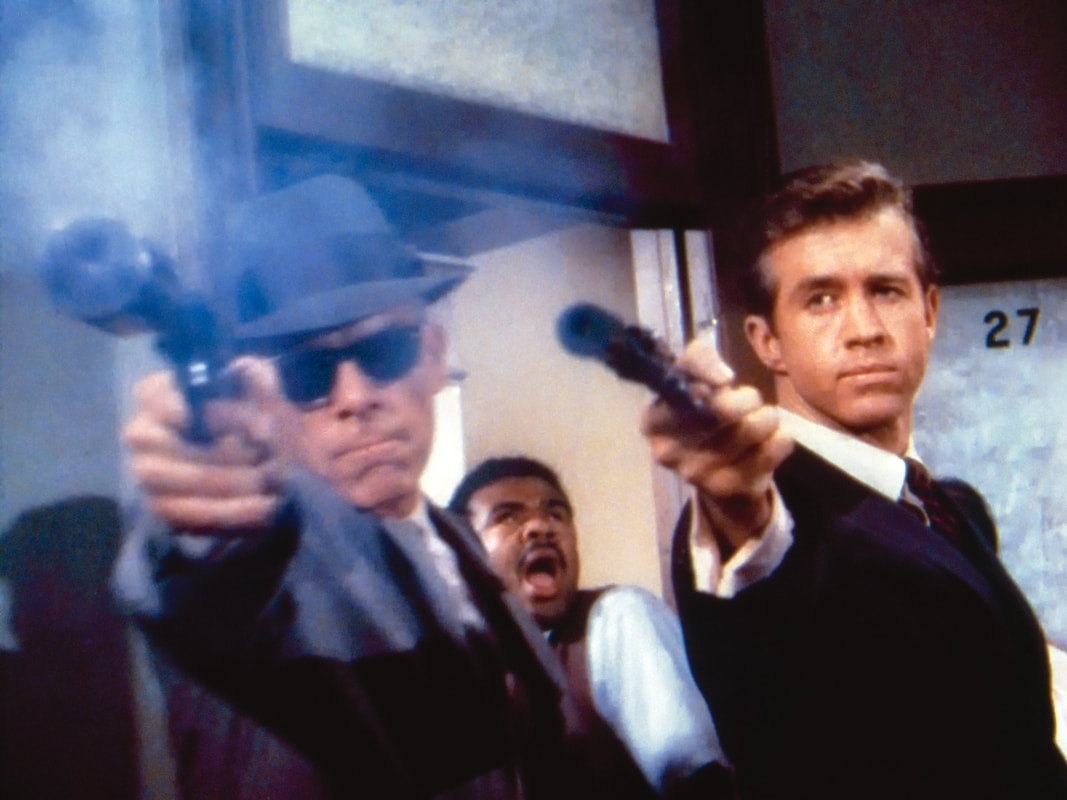TV Noir |
NEO NOIR
|
Universal Noir '64 |
NBC 1964
|
|
Where his rivals saw coal, Lew Wasserman, head of MCA-Universal, envisioned diamonds. As early as 1949, he had prodded the studio board to regard telefilm production as something more than a sideline—television, he argued, was the future of the film industry. By 1963, when the Octopus, as MCA was known around Hollywood, commanded the majority of series picked up by the Big Three, he was finally proved right. But Wassermam’s ultimate goal was the integration of the theatrical wing with the television one. To that end he and his lieutenant Jennings Lang came up with a hybrid: the movie made for television. They called it Project 120.
Of the three projects initially put into production, two were remakes of venerable films noirs from the Universal vault, The Killers (1946) and Ride the Pink Horse (1947); the third was an adaptation of The Widow-Makers (1946), an unpublished novel by screenwriter Michael Blankfort. Each Project 120 telefeature was accorded a budget of just under one million dollars, a figure generous by television standards, but well within “B” picture status by Hollywood’s. To produce and direct The Killers, Wasserman hired Don Siegel, a veteran of pictures like Crime in the Streets (1956) and The Lineup (1958). Siegel had in fact been slated to helm Universal’s 1946 treatment of the property before studio politics intervened; the job went to Robert Siodmak instead. Siegel’s remake, officially billed as Ernest Hemingway’s The Killers, retains the basic elements of its predecessor while flip-flopping the narrative impetus. In place of a reputable hero—the insurance investigator played by Edmond O'Brien in the original--he promotes the two assassins, renamed Charlie (Lee Marvin) and Lee (Clu Gulager), into the position of investigating a murder they themselves have committed. Streamlining Siodmak’s complex flashback structure to conform to the act breaks required of commercial television, but otherwise retracing the original film’s threads of greed and treachery, Siegel’s version is a model of efficiency entirely befitting the modern corporatized world in which his updated scenario takes place. Charlie and Lee, who conceal their silenced weapons in expensive leather satchels and dress like MCA executives, are in effect traveling businessmen whose product happens to be death. Siegel opens his film with them marching into a school for the blind and demanding to see one “Jerry Nichols” aka Johnny North (John Cassavetes), whom they promptly gun down. Afterwards, on the train ride home, Charlie allows himself a measure of speculation: “If they had a chance, they always ran, but he just stood there and took it.” Puzzled to his core at such behavior, he suggests they find out who hired them and why, thereby instigating a trail of violence at one with the delirium of the times. Unsurprisingly, NBC deemed the result unsuitable for broadcast; detoured to cinemas, it became one of Universal’s most profitable releases of the 1960s. In its stead, the breezy, Hitchcockian thriller See How They Run, as The Widow-Makers was retitled, became the first Project 120 telefeature to air, followed shortly by another cynically violent Siegel production, The Hanged Man. Yet the legacy of The Killers endures. One need only look at the philosophy-spouting, skinny-tie-wearing assassins of Pulp Fiction (1994) to see its impact on the contours of neo noir—a movement Siegel’s color film noir effectively set in motion. |
Hemingway’s story of two hired killers who harass the patrons of a diner while awaiting the arrival of their intended target is one of the cornerstones of noir fiction. In Don Siegel’s take, the killers set out to learn who commissioned the murder and why: the film unfolds in flashbacks.
FROM THE TOP: The Killers (1946) with Charles McGraw and William Conrad. The Killers (1960) with Dane Clark and Robert Middleton. The Killers (1964) with Lee Marvin and Clu Gulagher. (2X) |
Abridged from TV NOIR by Allen Glover. Published by Abrams Press. All rights reserved.



